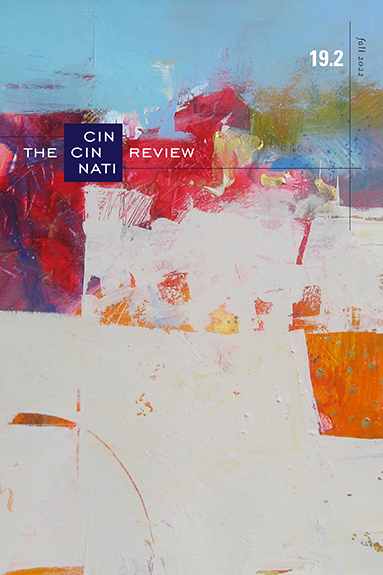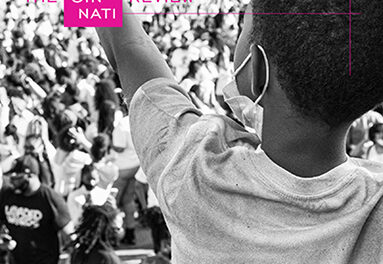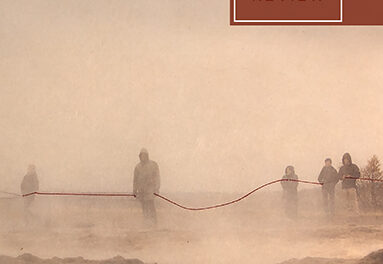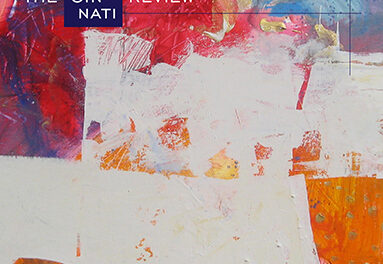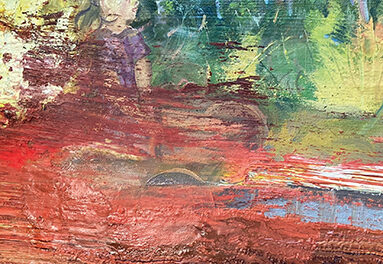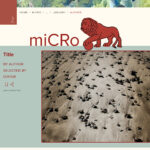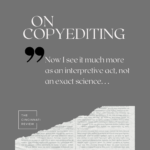We are pleased to share this craft essay by Emily Pérez and Nancy Reddy on the process of creating an anthology, which appeared in Issue 19.2 as part of a special multigenre review and essay feature on anthologies (read the entire feature here):
The Long Devotion: Poets Writing Motherhood. Eds. Emily Pérez and Nancy Reddy. University of Georgia Press, 2022. 248 pp. $26.95 (paper).
When our own children were born, in the years between 2010 and 2015, we both sought models for how to write about this wondrous, challenging new stage of life. Even though poets like Sharon Olds, Toi Derricotte, and Lucille Clifton had published poems about motherhood, we were surrounded by implicit and explicit messages that motherhood and serious writing did not mix.
First, there was the challenge of resources—how to have enough time, energy, money, and space to devote to another being and to one’s art? Second, there was the challenge of public perception. In a 2016 essay for VIDA about her book Hundred-Year Wave (Carnegie Mellon University Press, 2016), Rachel Richardson recounted the story of her program director warning her away from writing about mothering, telling her, “You’re a good poet. You wrote a good book. You’ll be fine as long as you don’t start writing mommy poems.”
Fortunately, poets of parenthood persisted. In the early twenty-first century, work about all kinds of parenthood started to appear regularly in journals and collections. A new realm of fatherhood poetry—one that investigated caretaking instead of traditional masculinity—became easier to find. (For more on fatherhood poetry, see Emily Pérez’s article in the Georgia Review, Spring 2021, “Harder and Better: The New Masculinity of Fatherhood Poetry.”) Work by nonbinary parents became more visible (see Krys Malcolm Belc’s The Natural Mother of the Child [Counterpoint, 2021]). Furthermore, motherhood poems started to push against the previous boundaries of the discourse, including subjects not usually discussed in poetry. There were poems about money—how to afford kids?—and the tension between ambition and caretaking. Poets brought readers into the birthing room and the world of bodily fluids that followed.
We rode that wave into an early-Thursday-morning 2018 AWP Tampa panel, “Writing Motherhood: Difficulty, Ambivalence, and Joy.” Despite the early hour, the room was packed. The panelists—Carolina Ebeid, Chanda Feldman, Chelsea Rathburn, and us—read poems about and discussed postpartum depression, parenting a child with autism, finding oneself in a lineage of Black artist mothers, the tension between creating art and parenting children, and postpregnancy bodies. The air felt charged with recognition and possibility. In the days that followed, people continued to approach us, asking that we further the conversation, that we post resources online, that we create an anthology. By Saturday night, we’d convinced ourselves that we could and would create an anthology of motherhood poetry that spoke specifically to our time.
This was an undertaking we knew next to nothing about. While we had each published books of poetry, neither one of us had experience with an anthology. Perhaps even more importantly, we hardly knew each other. We must have recognized a certain common drive, but was it enough on which to base a multiyear commitment? Together, over the next few years, we learned much about crafting an anthology. We established themes, solicited both poems and prose, pitched to presses, secured permissions, wrote section introductions and writing prompts, and we proofread, proofread, proofread. But the key lesson was not about technical details: it was about curating a collection rich and varied in its contributors’ voices, stories, and styles. To achieve that, we needed to build community, both on and off the page.
Post-Tampa email exchanges reveal how naive we were: “What’s next for us? Gathering our dream list of poets? Figuring out categories we want covered and also gathering our dream list of poets? I see a Google doc in our future!” That Google document would turn into hundreds; the initial folder of “poems we loved,” including ones by our original AWP presenters, would turn into a nest of folders multiple layers deep.
When we first reached out to those dream poets, many said both “Yes!” and “I wish I’d had a book like this when I became a parent.” This reassured us the book would meet a previously unmet need, that there were others who wanted to hear this conversation.
To us children of the mixtape-infused ’80s, a thematic approach to the book’s organization seemed better than chronological or alphabetical ordering. The first section, “Difficulty, Ambivalence, and Joy,” came easily. Sharing the title of the AWP panel, it set the stage for the range of tones we wanted the book to encompass. “The Body and Brain,” which we originally envisioned as a place to take on the physicality of caretaking, expanded to discuss health, domestic violence, and giving birth. We had poems about how mothering helps people see racism, environmentalism, and war anew—as well as reacquaints them with Earth’s beauty. These poems became “In the World.” Finally, “Transitions,” first conceived of as about older children, became a section about all kinds of transitions, and a place where some of the book’s most experimental writing appears, leaving behind traditional modes of meaning-making. These categories evolved as we gathered new poems, but from the start, having these four groups gave us a way to think about the kinds of themes we wanted the book to address.
More essential than themes were the voices we wanted the book to include. We sought voices of Black and Indigenous poets and other poets of color; poets who identified as members of queer, trans, nonbinary, and disability communities; poets who navigated their own illnesses as well as their children’s. As part of the continuum of motherhood, we wanted work by poets who dealt with infertility, abortion, or miscarriage, or decided not to have kids; poets who used IVF, established blended families, adopted, or fostered children; poets with children of all ages. Previous motherhood anthologies had centered cisgender white women in heterosexual marriages, women who had physically birthed healthy babies. The experience of motherhood is far more varied, and we wanted our anthology to represent the world we live in.
Despite our conscious commitment, in the early drafts we fell short. A potential contributor asked that we include even more racial and ethnic diversity. An outside reader for the press asked that we include more about paid labor and motherhood. Receiving feedback at a stage when it was still possible to make significant revisions was crucial; we recommend that all would-be editors seek at least one round of early critique. These critiques motivated us to conduct an internal audit, examining what we’d included, overrepresented, and missed. When we found gaps, we searched journals and anthologies, and asked contributors for recommendations.
For example, we first asked Clarissa Mendiola for the poem “Untitled or Nameless or Grieving a Life Not Lived,” about miscarriage. In our correspondence, she also sent us a beautiful set of unpublished poems. When we later realized that the book already had lots of grief and needed more joy, we instead took “Nearly There,” a poem about visiting Guam with her child and feeling a sense of home: “This is a brown child’s topography.” Similarly, we’d long been fans of Jasminne Mendez and wanted her voice on infertility. When the poem and essay we’d hoped to include were too expensive to acquire, we reached out to her again, and she was incredibly generous, sending us other poetry about infertility and medical interventions. Furthermore, she sent us a different essay, which we published. “More, More” presents an important perspective on the embodied experience of parenting with disability, something our book lacked. Contributors pointed us toward additional poets and poems we hadn’t read. In August 2020, we received an email from Camille Dungy urging us to read Krista Franklin’s “Extrapolating Motherhood,” which she called “the best non mother motherhood poem I’ve ever read.”
We sought aesthetic diversity—poems that operated in different ways on the page, poems with a variety of diction and syntax, pieces that would be considered formal and informal, traditional and experimental, visual and aural. Kiki Petrosino’s villanelle and Joyelle McSweeney’s sestina bump up against Lauren Haldeman’s poetry comic and Vanessa Angélica Villarreal’s poem designed on an x- and y- axis. Approaches range from the deeply personal, realist “My Mother Bathes Me after I Give Birth” by Kwoya Fagin Maples to the surreal, speculative scenarios in “A Series of Short Stories or Propositions” by 신 선 영 Sun Yung Shin. An essay poem by Rachel Zucker follows a poem in chapters by Carolina Ebeid and a one-sentence lyric by Khadijah Queen. Just as there is no single body that can encompass the experience of motherhood, there is no aesthetic that will resonate with all readers. We wanted readers to find comfort in aesthetics they loved and to be pushed and inspired by aesthetics that felt new.
We originally envisioned ending each section of the book with craft essays on writing and mothering, and we solicited those from our contributors. While some essays we received described the writing process and strategies that enabled writing while mothering, others went in thematic directions. Poets explored their inspirations, their concerns, politics, the earth, family life—going further than they could in a single poem. Once again, this diversity enriched the conversation.
Finally, we wanted our anthology to recognize a range of audiences and invite them into writing. We’d envisioned mothers and nonmothers, beginning and continuing writers, readers accustomed and unaccustomed to poetry. Given the many demands on their energy, caregivers often deprioritize creativity, so we wanted to demonstrate that writing is something you can enter, pause, and reenter. To that end, some of our essays directly address how to write when one has very little time. Melissa Stephenson’s “Confetti Time,” Emari DiGiorgio’s “Words in the Air: On Audio Drafting,” and Molly Spencer’s “I Stop Writing the Poem: On Motherhood and the Writing Life” all provide strategies. The book also includes writing prompts. Some give starting points and others more nuanced strategies for continuing work in progress. Finally, our original section introductions only contextualized the theme of each section, but we realized they could also gloss some content to make it more accessible to audiences new to poetry.
Though we knew we could not represent every unique identity, experience, or aesthetic, it was our hope that every reader of the anthology would be able to see some part of themselves reflected inside, as well as find writing that illuminated something new. Our book is limited by space, time, and the boundaries of our knowledge at the time of publication. Since then, we have found gorgeous, searing poems on motherhood almost every day. Perhaps you readers of this essay can take up the work to further widen and deepen the field.
One conclusion we’ve reached is that partnership was crucial. A piece of advice to anyone who wishes to coedit: find someone with a similar work ethic so that the work feels equal. And though we are both hardworking, deadline-oriented people, life sometimes causes delays. Did we mention we both have full-time jobs and kids? Here’s a second piece of advice: find someone willing to grant you grace, and be gracious in return. We were lucky to have complementary strengths (as well as a shared weakness for overwriting). We quickly learned who could do which thing more efficiently, and we both volunteered for drudge work. We communicated openly and honestly, apologized when necessary, and demonstrated gratitude. These practices fueled a healthy partnership.
Our working strategy involved many shared folders; thousands of emails; monthly to-do lists with short-term, mid-term, and long-term goals; regular phone calls; and a willingness to do things that scared us. So much of the work involved reaching out to strangers and asking them for something—advice, a poem, permissions. “The worst they can say is no,” was our motivator to hit “send” on each email.
Our collaborators extended through and beyond the writing community. People who had edited anthologies were kind enough to explain their processes. Poets whose work we solicited recommended other poets. Editors of presses helped us understand what makes an anthology attractive to or feasible for a press. A sibling with an MBA helped us to develop the marketing portion of the book proposal and to pare down our overly flowery pitch language. Nonwriter friends helped us figure out a good organizing strategy for the book. Caregivers need community, and as we tended to this book, encouragement and advice from friends, family, and other writers strengthened the book’s content in addition to strengthening those networks.
An amazing thing has occurred since the book came into the world. With looser pandemic restrictions around travel and gatherings, we have been able to host group readings, some in person and some online. In 2022 at AWP Philadelphia, the book officially launched. Eleven of our contributors gathered at a local bookstore. Old friends reunited and new connections sparked. Each poet read their own piece and a piece by somebody else. Yes, there were tears and goosebumps and laughter. The AWP Tampa conversation that had solidified into a book took to the air again, in the form of twenty-two poems filling the room with recognition and possibility.
Emily Pérez, a CantoMundo fellow and Ledbury Poetry Critic, is the author of What Flies Want (University of Iowa Press, 2022), winner of the Iowa Prize; and House of Sugar, House of Stone (Center for Literary Publishing, 2016). She coedited The Long Devotion: Poets Writing Motherhood (University of Georgia Press, 2022). More at emilyperez.org
Nancy Reddy is the author of Pocket Universe (LSU Press, 2022) and Double Jinx (Milkweed, 2015) and coeditor of The Long Devotion: Poets Writing Motherhood (University of Georgia Press, 2022). A recipient of grants from the New Jersey State Council on the Arts and the Sustainable Arts Foundation, she teaches writing at Stockton University.

